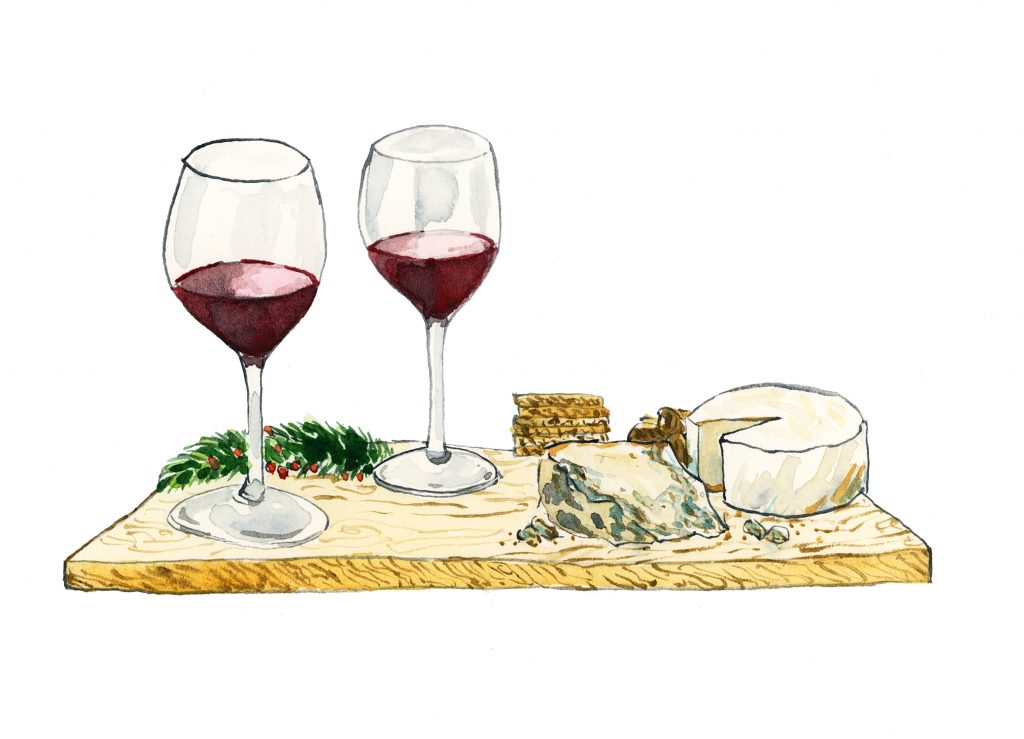Tips for serving your festive fine wines
Author: Issariya Morgan

Between them, Tom Cave and Henrietta Gullifer have decades of experience at Berry Bros. & Rudd. They impart a few quick tips for serving the classic styles of wine this Christmas.
Red Bordeaux
When it comes to serving red Bordeaux, the principal question is: to decant or not to decant? There are two main reasons to decant Claret. If it’s a young wine with robust tannins, the act of decanting allows the wine to breathe and open out. Typically, for any vintage since 2000, you might decant an hour before serving, and longer for younger wines.
The other principal reason to decant is associated with older, more mature wines. Pour these gently through a funnel with gauze. This prevents any larger particles, like those from a crumbly cork (as well as finer sediment, which is best left in the bottle), from entering the decanter, and in due course, your glass. Timing very much depends on the age of the wine. For a good-grade wine from the 1990s, I would decant an hour or so before serving. For something very much older, I might decant minutes before pouring.
“Double-decanting” is a handy option. This means emptying a bottle, rinsing it well with un-tainted water, and returning the wine to that same bottle. However, in my mind, the gorgeous colour of a red Bordeaux in a decanter – whether a more vivid hue or pale brick – is a wonderful sight on any table, hence the fine array of Victorian Claret jugs to be found.
Tom Cave, Account Manager
Champagne
Nothing marks the start of a party like the pop of a Champagne cork – it will bring a smile to any of your guests. There are various glasses you might consider when serving your fizz, but it’s a little-known fact that this can change the taste of the wine. The coupe is fashionable and looks the part, but it means you’ll have to drink your Champagne fast: the large surface area of the glass means the bubbles will start to disappear almost as soon as you’ve poured the wine.
In comparison, the flute has tiny fissures in the glass for the bubbles to bounce from, which will contain that lovely sparkle for longer. But the tulip glass, for me, is the best option. Like a flute, it has a narrow top, but the body of the glass is slightly wider. This contains the bubbles, but it also traps the aromas inside the glass, making it perfect for those complex vintage Champagnes. Overall, it gives you better flavour and aroma.
Henrietta Gullifer, Account Manager
Sweet wine
Whether you love a delicate off-dry Riesling, a honey-soused Sauternes or a sticky Vintage Port, there tends to be a sweet wine for everyone. Personally, I’m a big fan of a sweet Tokaji – even more intense than a Sauternes but with a fantastic, refreshing acidity. It’s a truly special treat.
When considering a sweet wine, the first question is: when do you serve it? You have several options, the most obvious being with dessert. For instance, a Pedro Ximénez Sherry alongside Christmas pudding makes a beautiful match, with those dried-fruit flavours complementing each other. But, increasingly, there’s a greater awareness that sweet wine is not just for dessert. Whether you’re pairing Port or Sauternes with cheese, or a sweet Riesling with a seafood starter, sweet wines can be served at various point in a meal.
Often, we tend to serve sweet wine too warm. Ideally, it should be served at 8-10°C, but straight from the fridge will also work perfectly. This prevents the wine from tasting too cloying. The exception to this is Port: serving it too cold would exacerbate the tannins and dull the fruit, yet I still wouldn’t serve Port too warm.
Henrietta Gullifer, Account Manager


